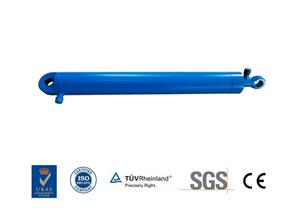Method for detecting surface defects of metal workpieces-principle of magnetic particle inspection
Method for detecting surface defects of metal workpieces-principle of magnetic particle inspection
Magnetic particle flaw detection uses the interaction between magnetic field leakage and magnetic particles at the defect of the workpiece. It uses the difference between the surface and near surface defects of steel products (such as cracks, slag inclusions, hairline, etc.) and the permeability of steel. The magnetic field at the material discontinuity will be distorted, and a leakage magnetic field is generated on the surface of the workpiece at the part where the magnetic flux leaks, which attracts the magnetic powder to form a magnetic powder accumulation at the defect-magnetic marks. Under appropriate lighting conditions, the defect location and shape appear By observing and explaining the accumulation of these magnetic particles, magnetic particle inspection is realized.
In the industry, magnetic particle inspection can be used as the final product inspection to ensure that the workpiece does not produce harmful defects on the surface after various processing procedures (such as welding, metal heat treatment, and grinding). It can also be used for the inspection of semi-finished products and raw materials such as bars, billets, forgings, castings, etc. to find existing surface defects. Railway, aviation and other transportation departments, smelting, chemical, power and various machinery manufacturing plants, etc., are often used to detect important steel parts during periodic maintenance of magnetic powder to detect defects such as fatigue cracks in use Prevent catastrophic accidents during continued use of equipment.
Principle of magnetic particle inspection
Magnetic particle inspection is a non-destructive testing method for detecting defects at or near the surface of ferromagnetic materials by the accumulation of magnetic particles in the leakage magnetic field near the defect. The workpiece made of magnetic materials such as steel is magnetized, and the magnetic leakage characteristics of the defect site are used to adsorb the magnetic powder, and the flaw detection method of the surface defect and near surface defect of the detected object is displayed according to the magnetic powder distribution. The flaw detection method is simple and intuitive.
Magnetic particle inspection types:
1. According to the magnetization direction of the workpiece, it can be divided into circumferential magnetization method, longitudinal magnetization method, composite magnetization method and rotary magnetization method.
2. According to the different magnetizing currents, it can be divided into: DC magnetization method, half-wave DC magnetization method, and AC magnetization method.
3. According to the preparation of magnetic powder used in flaw detection, it can be divided into dry powder method and wet powder method.
4. According to the time of applying magnetic powder to the workpiece, it can be divided into continuous method and residual magnetic method.
Features of magnetic particle inspection
The advantages of magnetic particle inspection are: very effective inspection of defects such as steel materials or surface cracks of the workpiece; equipment and operation are relatively simple; fast inspection speed, easy to inspect large equipment and workpieces on the spot; inspection costs are also lower. The disadvantages are: it is only suitable for ferromagnetic materials; it can only show the length and shape of the defect, but it is difficult to determine its depth; some workpieces that have an effect on residual magnetism need to be demagnetized and cleaned after magnetic particle inspection.
Magnetic particle detection has high sensitivity and easy operation. However, it cannot find the parts inside the bed castings and materials with poor permeability (such as austenitic steel), and it cannot find the deeper defects in the castings. The surface of the castings and steel materials to be inspected must be smooth, and it can only be carried out after grinding.




